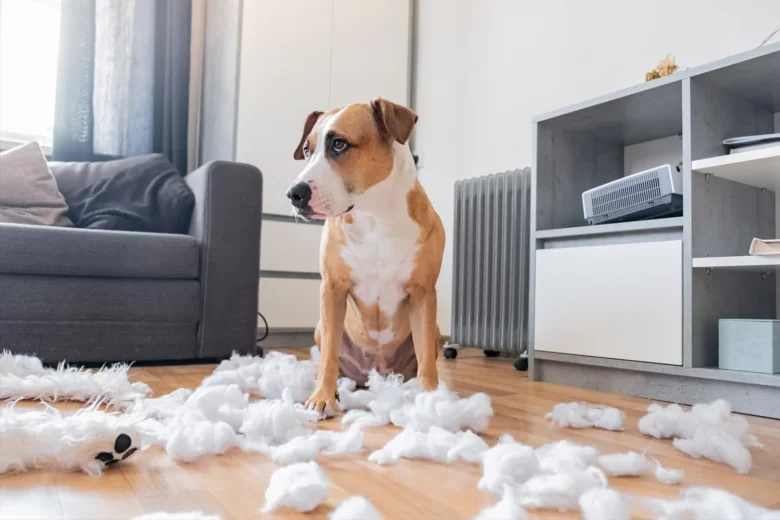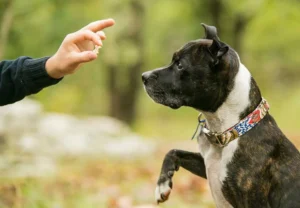Pet behavior problems can be very frustrating for owners, but understanding and dealing with them properly can help you build a better relationship with your furry friend. Several behavioral problems, such as excessive screaming or destructive chewing, can make life more difficult for you and your pet. To solve these problems, you need to be patient, consistent, and attentive in the way you train and control behavior. This article discusses common pet behavior problems and provides tips on how to solve them.
1. Excessive Barking
Excessive barking is a common problem, especially in dogs that are known to be loud. Dogs may bark excessively when they are bored, scared, protecting their territory, or need attention. To prevent dogs from barking excessively, it is important to figure out why they do it. For example, if your dog barks out of boredom, it may help to give them more exercise and interactive activities. If your dog is barking because he is trying to protect his territory, it can be helpful to set up a safe area and give him the “quiet” command. To break this habit, you will need to continue training and dealing with the reasons why your dog is barking.
2. Separation Anxiety
When a pet becomes too restless when left alone, this is called separation anxiety. Some signs include destructive behavior, excessive barking, and attempts to escape. To help your pet deal with separation anxiety, you can first desensitize him to your absence. Start with shorter movements and gradually add longer movements. Giving your pet puzzle toys or treats that he only gets when you are not around can also distract and calm him. In the worst case, you may need to seek help from a trained behaviorist or veterinarian.
3. Destructive Chewing
Both puppies and adult dogs often chew on things they should not. When pets are anxious, growing, or bored, they will chew on shoes, furniture, and other things around the house. To prevent your pet from chewing on things that are not good for him, you can provide him with good chew toys and redirect his attention. Make sure your pet has plenty to do so that he does not get bored. Spraying deterrent sprays on furniture and other objects can also help discourage pet chewing. This problem can be solved by giving dogs positive rewards for using chew toys and changing their behavior.
4. Aggression
Pets can show aggression in many ways, such as barking, biting, or snapping. Fear, defensiveness, or pain can all lead to aggression. When dealing with anger, you must be careful not to make matters worse. Find out why your pet is acting aggressively and try to desensitize him to those things. It is important to give people positive feedback when they are acting calmly and avoid situations that make them angry. In cases of extreme aggression, it is best to speak with a professional trainer or behaviorist to ensure that everyone is safe and that the problem is effectively addressed.
5. Jump Up
It is very common for dogs, especially active dogs, to jump up. While it may look fun, jumping up can be a problem, especially when people are walking by. To stop this behavior, do not reward your pet by paying attention to him when he jumps up. Instead, teach your pet another habit, such as sitting, and reward him when he does. With regular training and clear boundaries, your pet will learn that jumping up is not an option.
6. Pull on the Leash
Dogs often pull on the leash during walks, which can be due to a lack of energy or lack of exercise. To prevent your dog from pulling on the leash, handle him while he walks calmly by your side. Learn how to walk on an open leash by doing things like pausing when your pet pulls and starting again when he returns to you. Using a front clip leash can also help your pet stop pulling by giving your pet something else to focus on. To improve your traction habits, you need to practice regularly and be patient.
7. Housetraining Issues
Puppies and some adult dogs often have problems with housetraining, such as accidents in the home or marking territory. Establish a regular schedule for feeding, toileting, and walking to help with housetraining issues. Reward your pet when he goes outside to the toilet and supervise him indoors to prevent problems. If your pet is stained, spaying or neutering can help, and using chemical cleaners to remove odors can help prevent stains from forming again.
8. Fear of New Things
When pets are exposed to new situations or experiences, they may show signs of fear or anxiety. This can include fear of new sights, people, or sounds. Your pet may adjust to new things more quickly if you introduce him slowly and give him treats when he behaves well. Introduce new things slowly and associate them with treats and praise to build good relationships. Don’t put your hat in a situation that is too scary for him or her, as this will only make his fear worse.
Conclusion
Dealing with common pet behavior problems requires understanding, patience, and good teaching methods. By figuring out why your dog exhibits behaviors such as excessive barking, separation anxiety, and destructive chewing, you can use the right techniques to control and resolve these problems. To keep your pet well-behaved and happy, you must be consistent, use positive reinforcement, and pay attention to his needs. With effort and patience, you can help your pet resolve behavior problems and develop a better bond with him or her.
FAQs
1. What are some common pet behavior problems?
Pets often have behavior problems such as excessive barking, separation anxiety, destructive chewing, bullying, jumping up, pulling on the leash, difficulty with housetraining, fear of new things, and demand for food.
2. What can I do to stop my dog from barking excessively?
Before you try to stop your dog, you need to figure out why he is barking so much. This could be because he is bored, scared, or territorial. If you think your dog is bored, give him more mental and physical activity. If your dog is barking because he is territorial, teach him the word “quiet” and give him a safe place to go. It is important to continue training and figure out the cause.
3. What should I do if my pet becomes anxious when I am away?
If your cat has separation anxiety, start by leaving him for short periods and then slowly increase the amount of time you are away. To keep your pet occupied, you can give him puzzle toys or treats that he can only get when you are not there. If the problem is severe, you should consult a professional behaviorist or veterinarian.
4. How do I stop my dog from chewing furniture?
To prevent your pet from chewing on things that are not good for him, you can provide him with good chew toys and focus his attention. Make sure your pet has plenty to do and think about. Use sprays to keep pets away from furniture and other valuables and encourage them to chew on toys.
5. What should I do if my pet is mean?
If your pet is aggressive, find out what is causing him to act that way and try to desensitize him to those things. Use positive feedback to keep people calm and stay away from things that make people angry. If the aggression is severe, you should seek help from a professional trainer or behaviorist.



